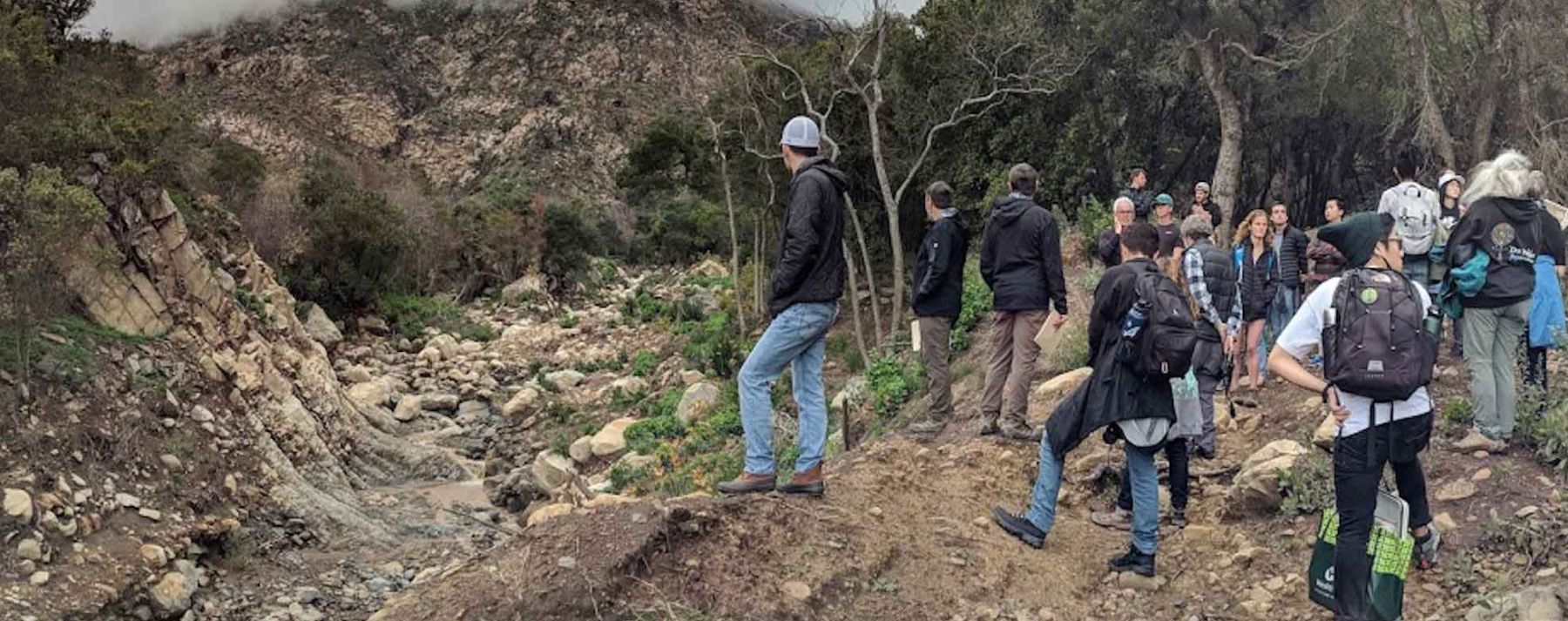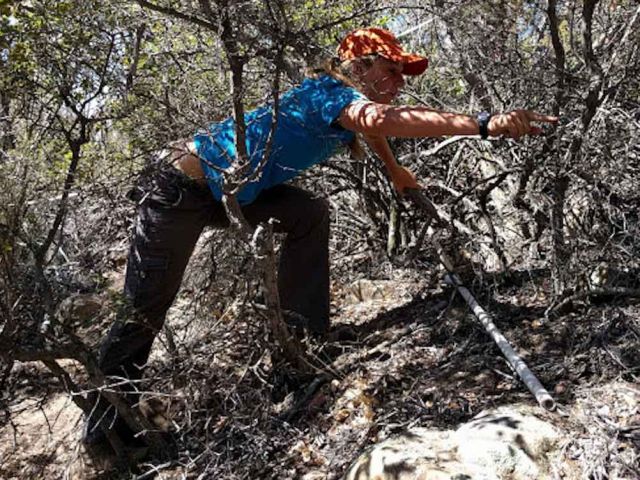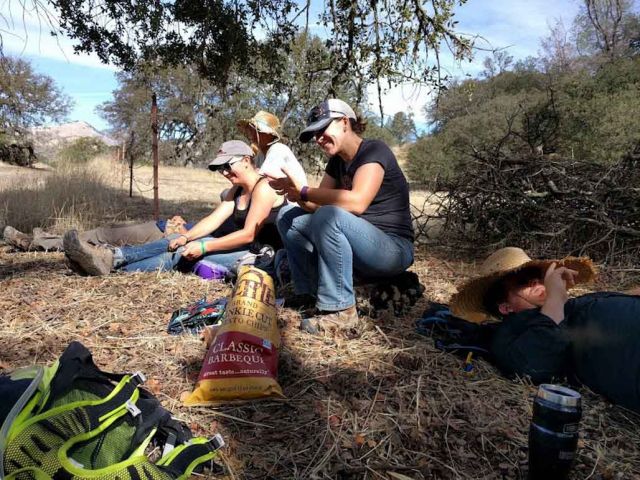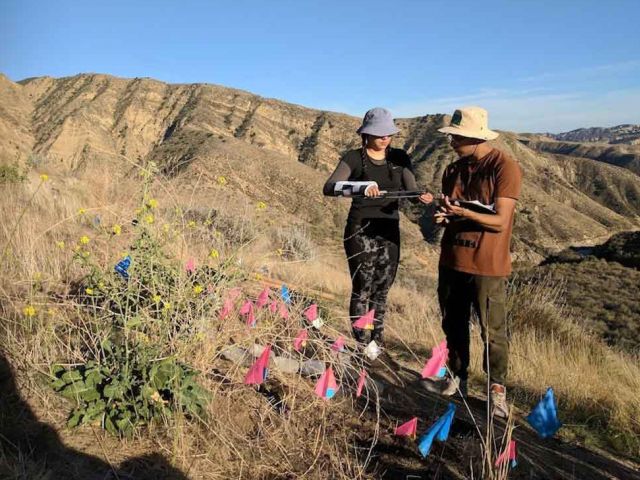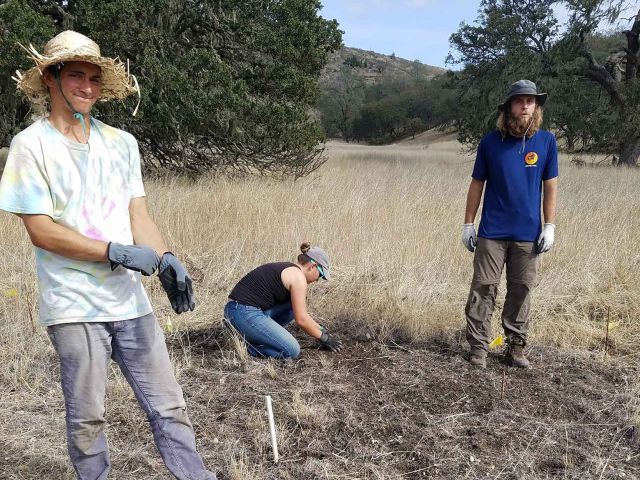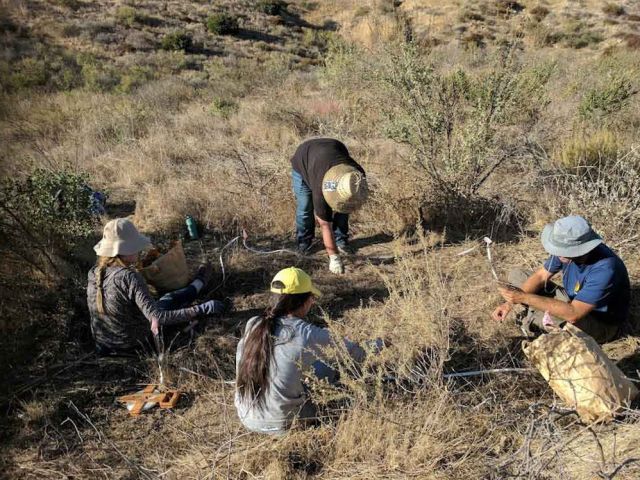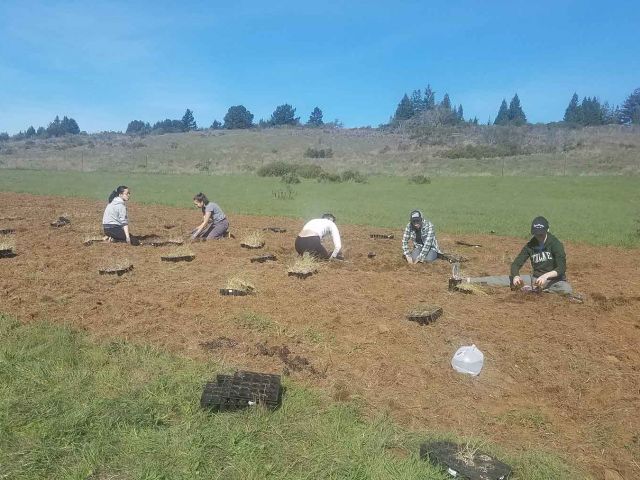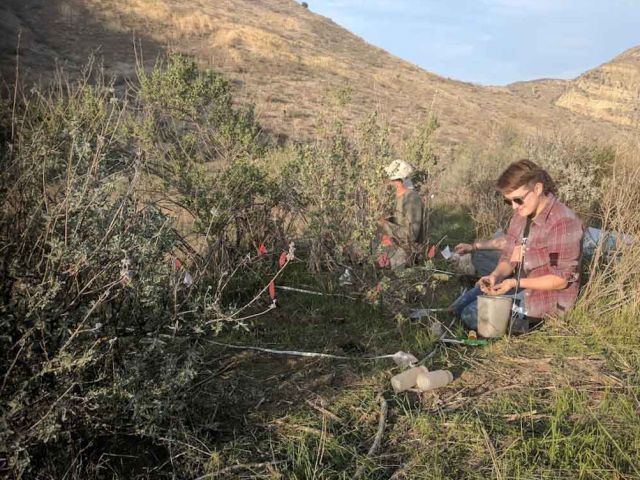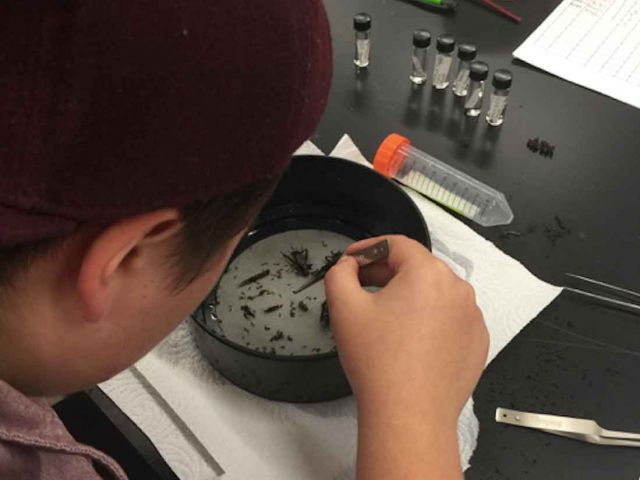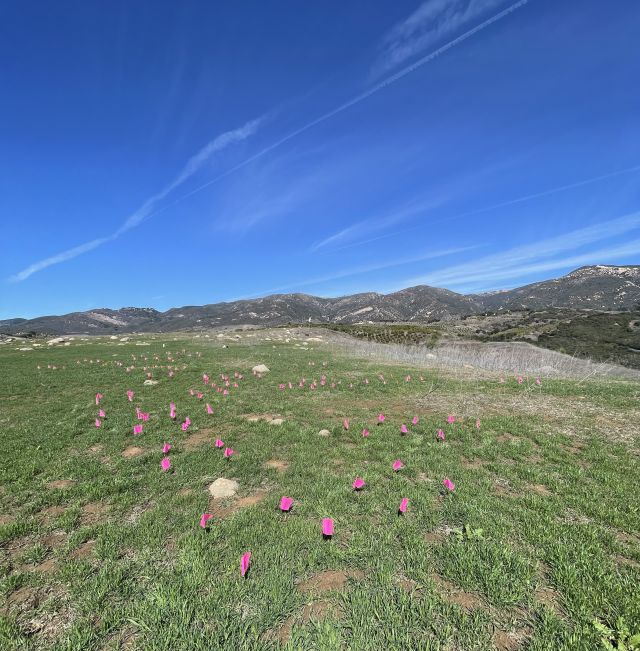
Non-native grass thinning in chaparral restoration - Albert Li
Albert’s project evaluates the impacts of thinning non-native grasses on the eventual growth and reproductive success of the remaining grass individuals (e.g., Avena barbata) and on the survival of outplated native shrub seedlings (Ceanothus megacarpus). His research applies the theory of Constant Final Yield – the theory that at some threshold of plant density, total plant biomass plateaus and remains consistent even if plant density further increases – to the practice of chaparral restoration where non-native grasses relentlessly dominate the above ground community and the soil seed bank.
Through administering multiple levels of non-native grass thinning (0 - 100% removal) in winter and comparing end-of-season grass density and grass biomass, Albert’s project will provide insights on if the theory of Constant Final Yield applies to chaparral restoration and at what density of non-native grasses the threshold is reached. Furthermore, outplanting native seedlings will inform how that threshold influences the survival and growth of desirable (from a management perspective) native woody plants.
Understanding where this threshold is will contribute to our understanding of how to manage non-native grasses in invaded ecosystems and can aid restoration practitioners in planning their non-native grass removal targets given available resources and site conditions.
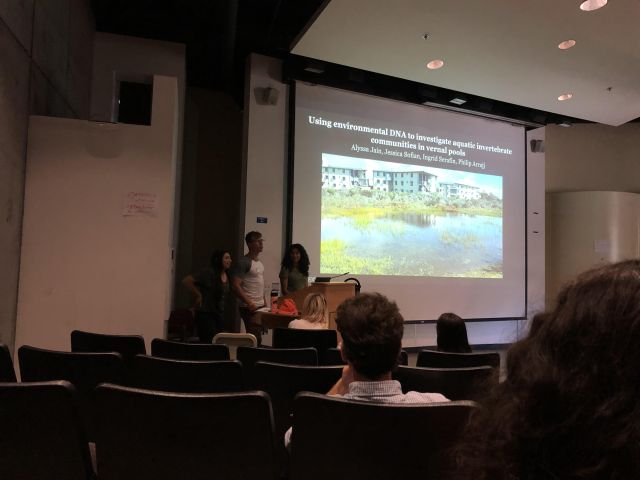
Vernal Pool DNA
Alyssa Jain, Jessica Sofian, McKenzie Goetz, Phil Arrajj, Cara Orndahl, Bridget Murphy, Ingrid Serafin, Kellen Pierce, Jessica Chan, Zoe Salyapongse, Julianne Braime, Shaun Barksdale, Josie Spiegelman, Ella Heidman Pinker, Madelyn Balochie, Leela Cromwell, Mark Wang, Alberto Garcia Villaseñor, Izzy Chang, Katie Moore, and Maria Schneider are developing a new methodology to detect aquatic invertebrates in vernal pools by scooping up water samples. From this water, we can extract fragments of DNA sloughed off from the invertebrates, amplify the DNA, and sequence it to determine what species are present in a restored vernal pool. Alyssa, Phil, and Ingrid presented their work at the EEMB Undergraduate Research Symposium, which is an annual event that brings together all the undergraduate researchers in EEMB to share their projects and experiences in the department
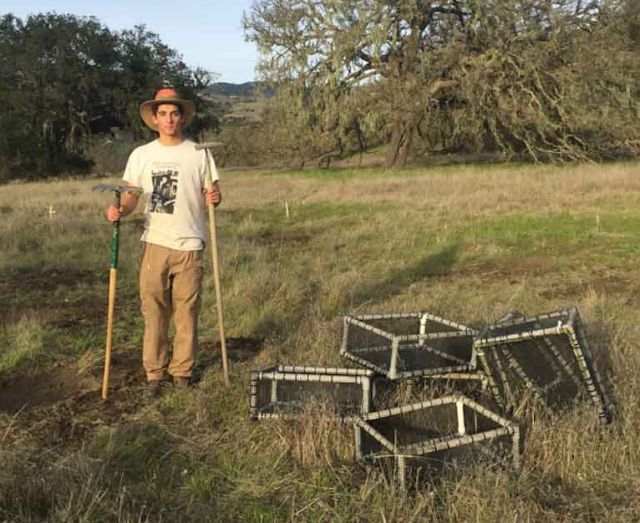
Grassland Restoration - Benny Drescher
After assisting with the lab’s research on grassland restoration for several years, Benny was inspired to investigate why one experimental site at Sedgwick Reserve garnered substantially less native plant establishment than the other experimental site nearby. In collaboration with Maddie Nolan, he used field and greenhouse experiments to test two hypothesized drivers: seed loss to foraging animals vs. different soil characteristics at the two sites. In his field experiments, he constructed seed-baited track pads to assess granivore activity, deployed trail cameras to capture animal visits, and applied native seed mixes to caged and uncaged plots to tease apart the effects of soil, seed mix, and seed foragers.
From his greenhouse experiments, he found that germination did not differ between the two soils. This suggests that seed foragers, rather than soil dynamics, were the likely cause of the distinct restoration outcomes. Evidence from his field experiments also supports this finding. After Benny finishes working through the data from his field work, he plants to submit his project's findings to a peer-reviewed journal for publication. In addition to having conducted a study that will serve useful to restoration practitioners and researchers of California grasslands, Benny has provided himself with a much deeper learning experience than any university classroom could provide.
Files
GIS Mapping - Shane Dewees
Obligate seeders fill the critical role of extending chaparral communities to more xeric and nutrient poor areas (Keeley 1986). This also helps to lower chaparral’s overall vulnerability, since xeric, nutrient-poor areas are less vulnerable to invasion by invasive species (Keeley 2004). Obligate Seeders are also a more drought resistant functional group than either obligate or facultative resprouters are (Keeley 1986); a feature of growing importance as Southern California’s drought persists and available groundwater continuously diminishes. Therefore, a potential reduction in obligate seeders could pose a detrimental threat to the long-term stability and perseverance of chaparral communities. This study uses Vegetation Type Mapping (VTM) data collected by Wieslander in 1934 and CALVEG (Classification and Assessment with LANDSAT of Visible Ecological Groupings) data from the U.S. Forest Services, collected in 2009 to look at the change in chaparral and obligate seeders’ distribution in the Ventura and Los Angeles counties of Southern California from 1934 to 2009. We have found that while 77.81% of the original chaparral area identified in 1934 still remains as chaparral, only 35.36% of the original area defined as obligate seeders remains as obligate seeders. We then analyzed the influence of 10 different variables on the observed conversion with a random forest analysis. This showed that elevation, minimum January temperature, and mean annual precipitation were the most influential variables on conversion, with conversion occurring at lower elevations, with higher minimum January temperatures, and less precipitation. These findings can help us identify future areas of obligate seeder dominated chaparral most vulnerable to conversion and allow us to focus more conservation efforts there.
File
Germination in native soil - Thomas Aronson
Germination of native woody species in the field has almost no successful establishment despite success in the greenhouse. Therefore, we investigated possible inhibitors of several native woody shrubs used in chaparral restoration. We investigated whether inhibition was occurring due to soil differences between the greenhouse and field. Our results showed that germination was higher in the native soil versus greenhouse soil. These findings show that native field soil is not inhibiting germination, pointing towards environmental factors as the germination and/or establishment inhibitors.
